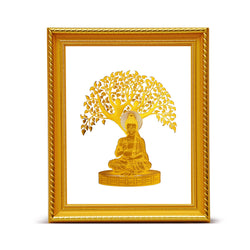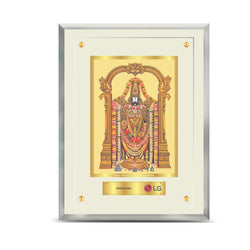Hindu weddings are renowned for their rich traditions and intricate rituals. These ceremonies are not just about the union of two individuals but also about the merging of families, cultures, and spiritual practices.
Among the many rituals, pujas (ritualistic worship) hold a central place, sanctifying the entire wedding process and imbuing it with divine blessings.
In this detailed exploration, I’ll guide you through the various pujas performed during Hindu weddings and their profound significance.
1. Ganesh Puja: Seeking Divine Blessings for a Smooth Ceremony
The journey of a Hindu wedding often begins with Ganesh Puja. Lord Ganesha, the elephant-headed deity, is revered as the remover of obstacles and the harbinger of good fortune.
This puja is usually performed by the groom’s family before the wedding festivities start. The ritual involves offering flowers, sweets, and incense to Lord Ganesha, along with chanting his mantras.
By seeking his blessings, families aim to ensure that the wedding ceremony proceeds without any hindrances.
For instance, a Ganesh Puja might involve the groom’s family setting up a small altar with an idol or picture of Lord Ganesha.
They would then perform the puja by lighting a diya (lamp), offering modaks (sweet treats), and reciting verses from the Ganesh Ashtakshara Mantra. This ritual sets a positive tone for the wedding, helping to remove any potential obstacles or negative energies.
2. Kanyadaan: A Sacred Exchange of Responsibility
Kanyadaan is one of the most emotional and significant rituals in a Hindu wedding. It symbolizes the bride’s parents offering their daughter to the groom, signifying their trust and responsibility being transferred to him.
During this ceremony, the bride’s father places his daughter’s hand into the groom’s hand, marking the start of their new life together.
The Kanyadaan is often accompanied by prayers and offerings to various deities, asking for their blessings for the couple’s future. The ritual may take place in front of a sacred fire, and the bride’s family might offer gifts and tokens of appreciation to the groom.
This act is deeply symbolic, representing the bride’s transition from her parental home to her new life with her husband.
3. Havan: Invoking Divine Presence and Purity
Havan, or Agni Puja, is a sacred fire ritual performed to invoke divine blessings for the couple. The ritual involves lighting a fire in a specially prepared altar and making offerings such as ghee (clarified butter), grains, and spices into the flames while chanting mantras.
This puja is crucial as it signifies purity, the divine presence, and the burning away of any negative energies.
The fire in the Havan represents Agni, the fire deity, who is believed to be a witness to the couple’s vows. By making offerings into the fire, the couple and their families seek to purify their intentions and invoke divine blessings for a prosperous and harmonious life together.
This ritual also serves to connect the couple with the divine, reinforcing the spiritual aspect of their union.
4. Saat Phere: The Sacred Vows
One of the most iconic rituals in a Hindu wedding is the Saat Phere, or Seven Circuits. During this ceremony, the bride and groom circle a sacred fire seven times, each round representing a vow they make to each other.
These vows cover various aspects of their future together, including love, respect, and support.
Each phera (circle) signifies a specific commitment, such as mutual respect, sharing of responsibilities, and standing by each other through thick and thin. The Saat Phere is a powerful ritual that symbolizes the binding of the couple’s souls and their commitment to facing life’s challenges together.
It is a moment of solemn promise and spiritual union, reinforcing their bond as husband and wife.
5. Grihapravesh: Welcoming the Bride into Her New Home
After the wedding ceremony, the bride’s first entry into the groom’s home is marked by Grihapravesh. This puja is performed to seek blessings for a happy and harmonious life in the new home.
The bride is welcomed with a traditional aarti (a ritual involving the waving of a lighted lamp) and is often asked to step into the house with her right foot first, symbolizing prosperity and good fortune.
In many traditions, the bride may also perform a ritual of placing a few grains of rice in the entrance of the home, symbolizing abundance and prosperity.
The Grihapravesh puja helps to establish a positive and auspicious environment for the couple’s new life together. It is a moment of transition, marking the bride’s entry into her new role as a member of the groom’s family.
6. Bidai: The Emotional Farewell
Bidai, or the farewell ceremony, is an emotional ritual where the bride departs from her parental home to start her new life with her husband. This puja is a way for the bride’s family to bid her farewell with love and blessings.
It is often accompanied by prayers for her safe journey and a happy married life.
During the Bidai, the bride’s family might offer gifts and tokens of love to the bride and groom, wishing them well as they embark on their new journey.
The ritual is a poignant moment that symbolizes the end of the bride’s time in her parental home and the beginning of her new life with her husband. It is a blend of emotions—joy for the new chapter and sadness for the departure.
7. Pashupatinath Puja: Seeking Lord Shiva’s Blessings
In some Hindu weddings, particularly those with a strong Shaivite tradition, Pashupatinath Puja is performed. This ritual is dedicated to Lord Shiva, one of the principal deities in Hinduism, and seeks his blessings for the couple’s union.
The puja involves making offerings of milk, honey, and fruits to Lord Shiva while chanting mantras and performing rituals.
The Pashupatinath Puja is performed to seek Lord Shiva’s divine protection and guidance for the couple’s married life. Lord Shiva is revered as the destroyer of evil and the embodiment of benevolence, and his blessings are believed to bring stability, harmony, and spiritual growth to the couple’s life.
8. Ashirwad: Receiving Blessings from Elders
The Ashirwad ritual is a significant part of Hindu weddings, involving the couple receiving blessings from the elders in both families. This puja is a way to seek the elders' approval and blessings for a happy and prosperous married life. The elders offer their blessings, usually in the form of prayers and gifts, and share their wisdom with the couple.
The Ashirwad is an important ritual that underscores the role of family and community in the couple’s new life.
The blessings and advice from elders are considered highly auspicious and are believed to pave the way for a successful and fulfilling married life. It is a moment of respect, gratitude, and acknowledgment of the support and love from family.
In Conclusion
The various pujas performed during Hindu weddings are not just ceremonial practices; they are deeply rooted in spiritual and cultural significance. Each ritual, from the Ganesh Puja to the Ashirwad, plays a crucial role in sanctifying the wedding process and ensuring that the union is blessed with divine grace and auspiciousness.
These rituals serve to connect the couple with their spiritual heritage, reinforce their commitment to each other, and honor the traditions that have been passed down through generations.
By embracing these pujas, the couple and their families celebrate not just the union of two individuals but also the rich tapestry of culture and spirituality that defines Hindu weddings.
As someone who values these traditions, I find that understanding and participating in these rituals adds a deeper dimension to the wedding experience, making it a truly memorable and meaningful occasion.
FAQs About Pujas in Hindu Weddings
1. What is the significance of Ganesh Puja in Hindu weddings?
Answer: Ganesh Puja is performed to seek the blessings of Lord Ganesha, the deity known as the remover of obstacles. This ritual is crucial in Hindu weddings as it ensures a smooth and successful ceremony.
By invoking Lord Ganesha’s blessings, families aim to eliminate any potential hurdles or disruptions that might arise during the wedding process.
2. What happens during the Kanyadaan ceremony?
Answer: The Kanyadaan ceremony is one of the most emotional and significant rituals in a Hindu wedding. During this ritual, the bride’s parents formally offer their daughter to the groom, symbolizing the transfer of responsibility and care.
The bride’s father places his daughter’s hand into the groom’s hand, signifying their trust and the beginning of the couple’s new life together. This ritual is often performed in front of a sacred fire and involves prayers and offerings to seek divine blessings.
3. Why is Havan performed during Hindu weddings?
Answer: Havan, also known as Agni Puja, is performed to invoke divine blessings through the sacred fire. The ritual involves making offerings such as ghee, grains, and spices into the fire while chanting mantras.
Havan symbolizes purity and the presence of the divine, and it helps to burn away any negative energies. This puja is crucial for purifying the environment and seeking divine blessings for the couple’s future.
4. What is the meaning of Saat Phere in a Hindu wedding?
Answer: Saat Phere, or Seven Circuits, is a pivotal ritual in a Hindu wedding where the bride and groom circle a sacred fire seven times. Each circle represents a specific vow or promise the couple makes to each other, covering aspects such as mutual respect, love, and support.
This ritual signifies the binding of their souls and their commitment to facing life’s challenges together. It is a profound moment of spiritual and emotional bonding.
5. What is Grihapravesh, and why is it important?
Answer: Grihapravesh is the ritual performed when the bride enters the groom’s home for the first time after the wedding. This puja is significant as it seeks blessings for a harmonious and prosperous life in the new home.
The bride is welcomed with aarti (a ritual involving the waving of a lighted lamp) and is often asked to step into the house with her right foot first. Grihapravesh marks the bride’s transition into her new role and establishes a positive atmosphere in the home.
6. What is Bidai, and how is it conducted?
Answer: Bidai, or the farewell ceremony, is an emotional ritual where the bride departs from her parental home to start her new life with her husband. During Bidai, the bride’s family bids her farewell with love and blessings.
The ritual typically involves prayers for her safe journey and happy married life. The bride’s family may also provide gifts and tokens of appreciation to the bride and groom. This ceremony symbolizes the end of the bride’s time at her parental home and the beginning of her new life.
7. What is the significance of Pashupatinath Puja in some Hindu weddings?
Answer: Pashupatinath Puja is dedicated to Lord Shiva, a principal deity in Hinduism. This puja is performed in some Hindu weddings, especially in regions with strong Shaivite traditions, to seek Lord Shiva’s blessings for the couple’s union.
Offerings of milk, honey, and fruits are made to Lord Shiva while chanting mantras. This ritual is believed to bring divine protection, stability, and spiritual growth to the couple’s married life.
8. What is the purpose of the Ashirwad ritual in Hindu weddings?
Answer: The Ashirwad ritual involves the couple receiving blessings from the elders in both families. This puja is performed to seek the elders' approval and blessings for a successful and prosperous married life.
The elders offer their blessings, prayers, and often gifts to the couple. The Ashirwad ritual highlights the importance of family support and wisdom in the couple’s new journey, and it is considered highly auspicious for their future together.
9. Are there any specific rituals for different regional Hindu weddings?
Answer: Yes, Hindu weddings can vary significantly based on regional traditions and cultural practices. For example, South Indian weddings may include rituals like the Oonjal (swing ceremony), while North Indian weddings might feature the Mehendi (henna) ceremony.
Each region has its unique customs and variations of the core rituals, but the underlying significance remains the same—celebrating the union of the couple and seeking divine blessings for their life together.
10. How do modern Hindu weddings incorporate traditional pujas?
Answer: Modern Hindu weddings often blend traditional pujas with contemporary elements to reflect personal preferences and lifestyles. While the core rituals like Ganesh Puja, Saat Phere, and Grihapravesh are maintained, couples may adapt certain practices to fit their modern context.
This might include incorporating personalized rituals, using contemporary decor, or adjusting the wedding schedule. Despite these changes, the essence of seeking divine blessings and honoring cultural traditions remains central to the ceremony.




